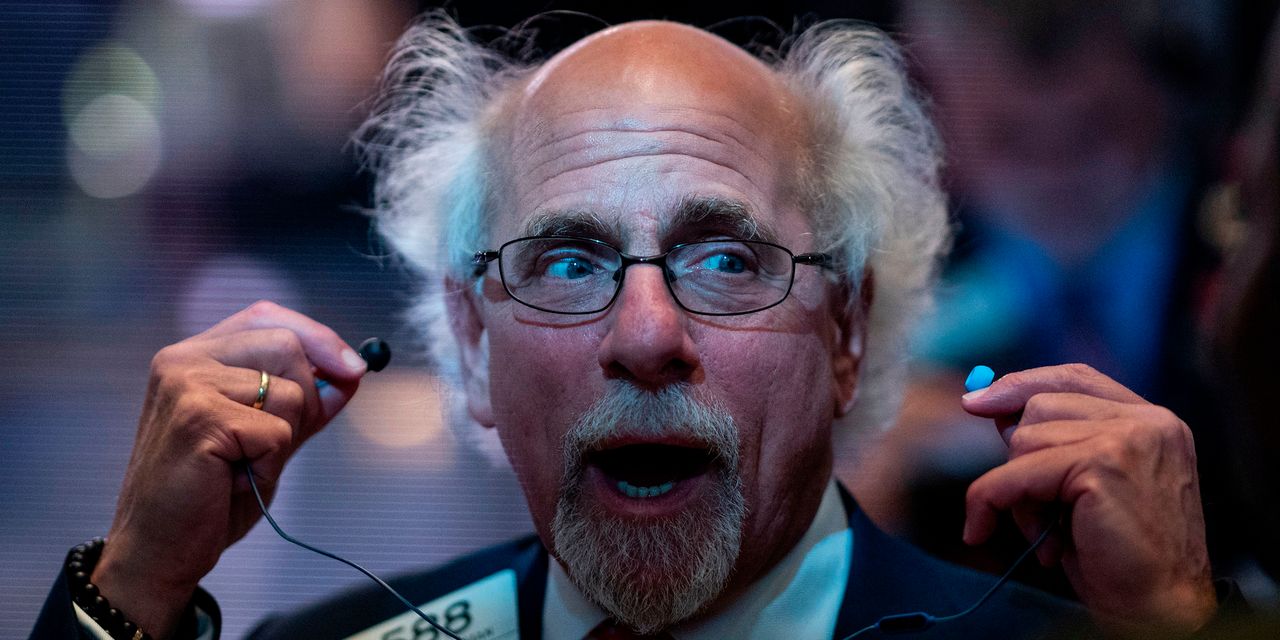The best noise-canceling headphones may be the ones the market has been wearing this year. It better hope the Federal Reserve doesn’t snatch them away—because stocks might not like what they’re forced to listen to.
For now, investors can’t hear—or see—much evil. The
S&P 500 index
advanced 0.7% this past week, and the
Dow Jones Industrial Average
rose 2.1%, extending its winning streak to 10 days. Only the
Nasdaq Composite,
down 0.6%, lost ground.
With the latest gains, the S&P 500 has risen 18.2% in 2023, against a backdrop of recession worries, mixed economic data, a banking crisis, and political instability. Earnings season, which continues, seems to be going just fine for companies not named
Tesla
(ticker: TSLA) or
Netflix
(NFLX). At this point, the Fed might be the only thing able to stop the momentum.
Not that Wall Street is worried. It is almost a foregone conclusion that the central bank will raise interest rates by a quarter of a percentage point at its policy meeting on July 25-26, after pausing rate hikes last month. Expectations for a hike in September stand at just 16%, according to the CME FedWatch Tool. If the Fed confirms the accuracy of that point of view, then the market could continue its run higher.
The Fed, though, might not see it that way. Yes, inflation stands at 3%, down from a high of 9.1% last year, which is a good sign. But core inflation is running at 4.8%, well above the Fed’s 2% target, and the labor market has yet to show durable signs of a cooling economy. For all the headlines of large layoffs at big companies earlier this year, jobless claims fell to 228,000 in the week ended Thursday from 237,000 the prior week. If the Fed signals that it still has more work to do, it could tip markets lower.
“People are getting comfortable, confident, and complacent,” says Michael Darda, chief market strategist at Roth MKM. “It’s a mistake to assume we’re really out of the woods.”
And even if the market makes it out of July unscathed, there’s always August, and the Fed’s annual Jackson Hole Economic Symposium late in the month. Last year, Fed Chair Jerome Powell’s remarks at Jackson Hole spooked markets as he warned that financial tightening would bring “some pain” to households and businesses. That pain was felt in the market: The S&P 500 fell 19.4% in 2022.
Few economists and market watchers expect Powell to be quite as hawkish now that inflation has come down from last year’s highs, but his coming comments still could cast a chill. “Although some consolidation in markets makes sense given the increasing odds financial conditions have eased too much, we wouldn’t aggressively press that trade now,” writes Dennis DeBusschere, chief market strategist at 22V Research. “The Fed has a chance at a soft landing, and they are likely to go for it.”
That’s one reason Nicholas Colas, co-founder of DataTrek Research, remains optimistic, despite signs that Big Tech, the driver of this year’s rally, may be losing momentum. With the S&P 500 up so much this year, some investors may opt to take profits and sit out the rest of 2023. Others might just rotate out of highflying tech names into cyclicals, such as financials. That might make for a good trade, and a rotation is typically a bullish signal.
But because tech is such an outsized portion of the market, those other stocks would have to post enormous gains to move the index meaningfully in the back half of the year. “If Big Tech goes down by 10%, you need everything else to go up so much more,” Colas said.
The economy might have something to say about the market’s rally. Stocks appear to have dismissed the potential for a recession, despite the procession of hot and cold economic data. It’s enough to make Tesla CEO Elon Musk complain that “one day, it seems like the world’s falling apart and the next day everything is fine,” before acknowledging that he doesn’t “know what the hell is going on.”
The data suggest that the possibility of a recession shouldn’t be ignored. The leading indicators index, for one, has fallen for 15 consecutive months, something that has always resulted in a slowdown. That jibes with the yield curve, which has been inverted for almost a year—a recession prognosticator without fail. “We have a really persistent signal in the yield curve,” says Roth MKM’s Darda. “It would be unprecedented not to have a recession.”
And that would surely stop the music—unless the Fed does it first.
Write to Carleton English at [email protected]
Read the full article here





